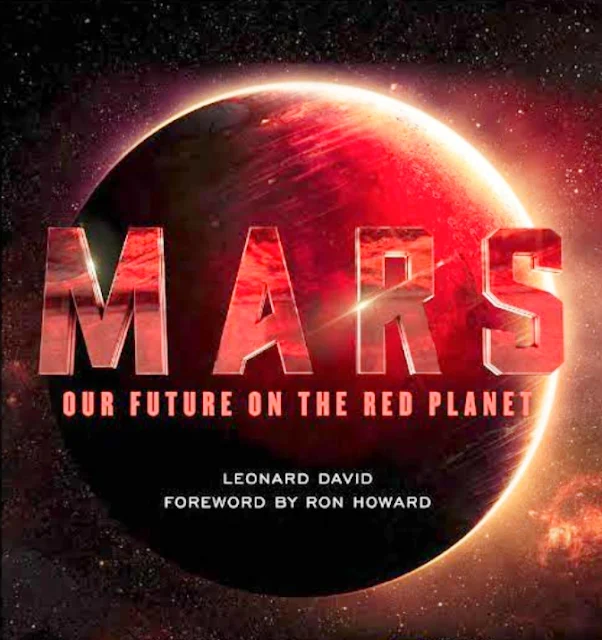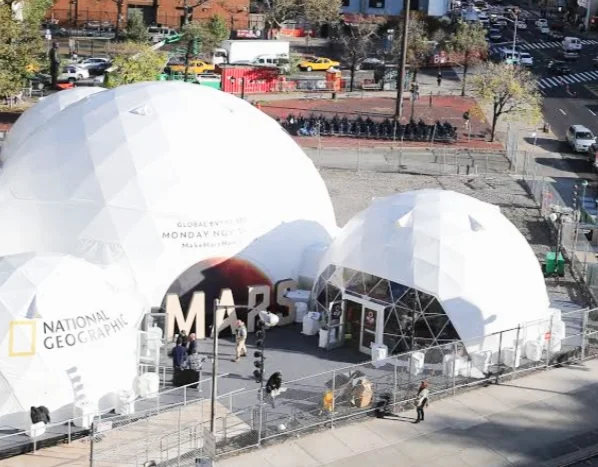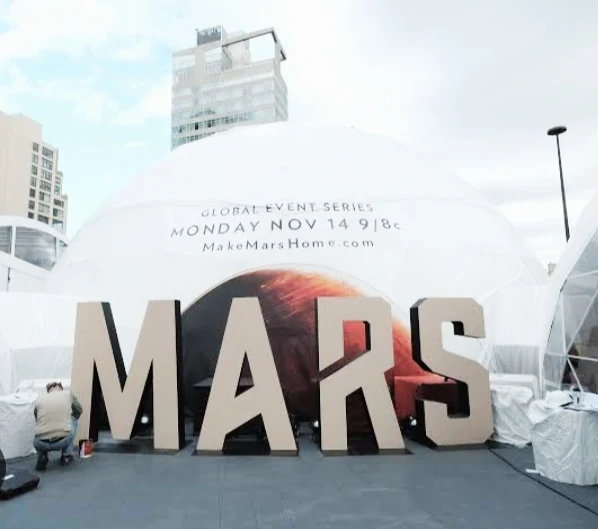Stepping onto the Red Planet: National Geographic's VR Expedition
Imagine yourself not just watching a documentary about Mars, but actually being there. National Geographic's "Mars: Experience VR" project did just that, transporting visitors to the rusty red expanse through the power of virtual reality.
This immersive experience wasn't just about sightseeing. Geared towards potential Martian colonists, the VR simulation offered a glimpse into the lives and challenges that await those brave enough to embark on this pioneering journey. Donning VR headsets, participants were thrust into the heart of the action, experiencing the Martian landscape firsthand.
National Geographic didn't settle for a static experience. The project incorporated cutting-edge technology, including a cable coaster VR simulator. This innovation allowed participants to move freely within the virtual world, adding a layer of realism that traditional VR setups couldn't match.
More than just a technological marvel, "Mars: Experience VR" was a captivating marketing activation. Likely timed to coincide with the premiere of a Mars-focused documentary series, the project aimed to ignite public interest in space exploration and the prospect of colonizing the Red Planet.
National Geographic's "Mars: Experience VR"
National Geographic has taken viewers on a thrilling journey to the Red Planet through various Mars-related experiences. While there wasn't a singular VR project titled "Mars: Experience VR," there have been immersive initiatives that captivated audiences. Here's a breakdown of these experiences:
| Project Name | Description | Year |
|---|---|---|
| Make Mars Home VR [National Geographic's Mars series] | This VR experience served as a recruitment tool for a fictional Mars colonization program. Users donned VR headsets to explore the lives of early Martian colonists. | 2016 |
| Mars Experiential Dome (NYC) | This pop-up exhibit offered a multi-sensory experience of Mars. Visitors donned VR headsets and climbed into a motion simulator to feel the sensation of landing on the Red Planet. | 2016 |
| Live from Mars 360° (YouTube video) | National Geographic used 360° video technology to virtually transport viewers to the sets of their Mars docuseries. This wasn't a VR experience in the strictest sense, but it provided an immersive behind-the-scenes look. | 2017 |
These projects showcase National Geographic's commitment to using innovative storytelling methods to bring the wonders of Mars to the public.
Bringing Mars to Life: Technologies Behind National Geographic's "Mars: Experience VR"
National Geographic's "Mars: Experience VR" project took viewers beyond the screen, offering a taste of life on the Red Planet through the power of virtual reality. This immersive experience wasn't just about visuals; it incorporated innovative technologies to create a truly captivating simulation. Let's delve into the key technologies used in this project:
| Technology | Explanation | Purpose in the Project |
|---|---|---|
| Virtual Reality (VR) Headsets | Electronic devices worn on the head that create a simulated three-dimensional environment | The core technology, transporting participants to the Martian surface and providing an immersive experience. |
| Cable Coaster VR Simulator | A VR system integrated with a physical cable coaster ride | Elevated the experience beyond visuals by simulating movement across the Martian terrain, adding a layer of dynamism and realism. |
Explanation:
- VR Headsets: These headsets act as a window into the virtual world. By tracking the user's head movements, they create a realistic sense of presence, allowing participants to explore the Martian environment in a natural way. While details about the specific headsets used are unavailable, the project might have employed readily available options like Google Cardboard to make the experience accessible to a wider audience.
- Cable Coaster VR Simulator: This innovative technology took the experience to a whole new level. By combining VR with a physical cable coaster ride, participants weren't just seeing Mars; they were feeling it. As the VR environment simulated movement across the Martian landscape, the cable coaster would move in sync, creating a sense of physical displacement that further enhanced the feeling of being on Mars.
Technology Uses in National Geographic's VR Expedition
| Technology | Description | Purpose in the Expedition |
|---|---|---|
| Virtual Reality (VR) Headsets | Electronic devices worn on the head that create a simulated three-dimensional environment | Immerse participants in a virtual Martian environment, allowing them to explore and interact with the landscape. |
| (Possibly) Google Cardboard | A low-cost VR headset made of cardboard and smartphone technology | Potentially provide an accessible VR experience for a large audience (depending on the chosen VR headset). |
| (Possible) High-End VR Headsets | Advanced VR headsets with higher resolution, wider field of view, and potentially haptic feedback for a more realistic experience. | Enhance immersion by providing sharper visuals, a more expansive view, and the ability to feel virtual objects (depending on the specific headset features). |
| (Possible) Motion Tracking Technology | Systems that track the user's movements in real-time | Allow participants to move around the virtual environment naturally, potentially adding to the feeling of presence on Mars. |
| (Possible) Spatial Audio Technology | Techniques for creating realistic three-dimensional sound effects | Enhance immersion by creating a soundscape that seems to come from all around the participant, further simulating the Martian environment. |
| Cable Coaster VR Simulator (if used) | A VR system integrated with a physical cable coaster ride | Simulate movement on the Martian surface, adding a layer of dynamism and realism to the experience. Participants would feel the physical sensations of movement while experiencing the virtual Martian landscape. |
Notes:
- Specific details about the VR technologies used in the project are unavailable.
- The inclusion of some technologies, like high-end VR headsets, motion tracking, and spatial audio, are possibilities based on what could enhance the VR experience.
National Geographic's "Mars: Experience VR" project demonstrates the power of technology to create immersive and engaging experiences. By combining VR with physical motion simulation, the project offered a glimpse into the future of space exploration and ignited public imagination about the possibility of colonizing Mars.
Frequently Asked Questions for National Geographic's VR Expeditions
National Geographic's VR Expeditions offer immersive experiences that transport you to some of the most breathtaking locations on Earth. Here are some common questions and answers:
General Questions
- What kind of VR experiences does National Geographic offer?
- National Geographic VR Expeditions cover a wide range of topics, including wildlife, underwater exploration, and cultural heritage. You can experience everything from swimming with sharks to exploring ancient ruins.
- Do I need any special equipment to use National Geographic VR Expeditions?
- You'll need a VR headset compatible with the platforms where National Geographic VR Expeditions are available. Popular options include Oculus Quest, HTC Vive, and PlayStation VR.
- Can I watch National Geographic VR Expeditions on my smartphone or tablet?
- While some VR experiences can be enjoyed on mobile devices using cardboard viewers, for the full immersive experience, a dedicated VR headset is recommended.
Technical Issues
- My VR headset is not tracking properly. What should I do?
- Ensure there are no obstructions around your VR headset or your environment. Try recalibrating the tracking.
- The audio is not working correctly. How can I fix it?
- Check your VR headset's audio settings and ensure the volume is not muted. If the issue persists, try restarting your headset.
- The VR experience is causing me discomfort. What can I do?
- Take breaks during extended VR sessions to avoid motion sickness. Adjust the interpupillary distance (IPD) setting on your headset. If discomfort persists, consult a healthcare professional.
Content and Experiences
- What is the best National Geographic VR Expedition for beginners?
- "Ocean Rift" is a popular choice for beginners, offering a gentle introduction to the underwater world.
- Are there any VR Expeditions suitable for children?
- Yes, National Geographic offers family-friendly VR experiences that are both educational and entertaining.
- Can I explore different locations within a single VR Expedition?
- Many VR Expeditions allow you to explore multiple locations or environments, providing a more comprehensive experience.




